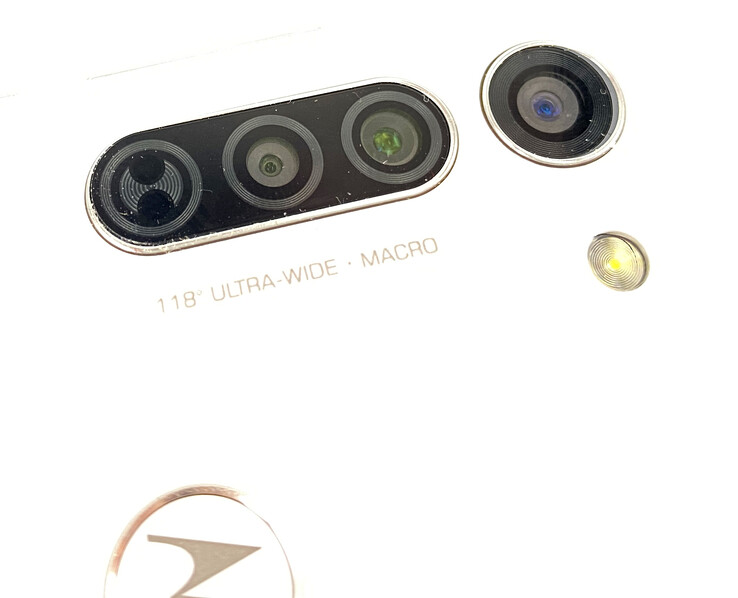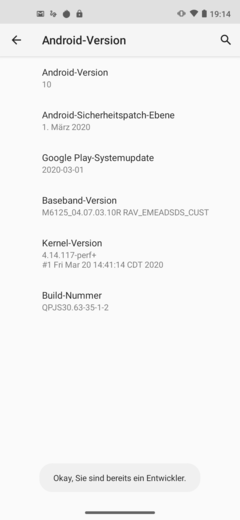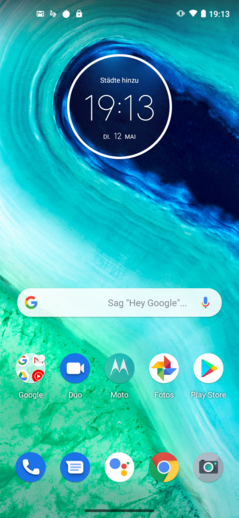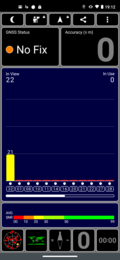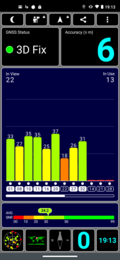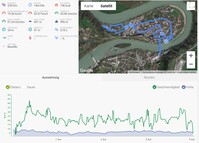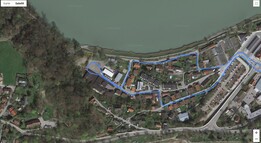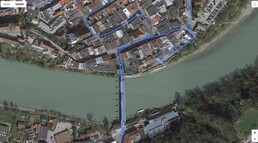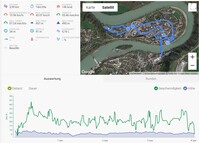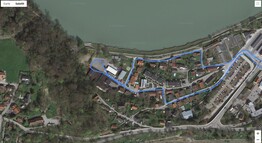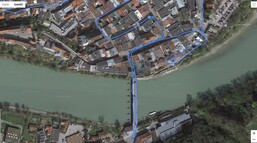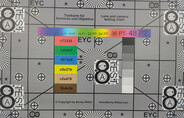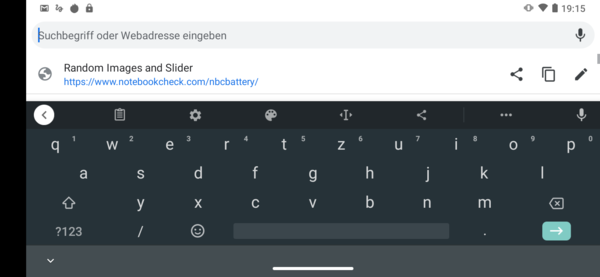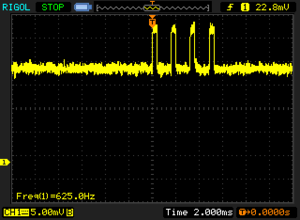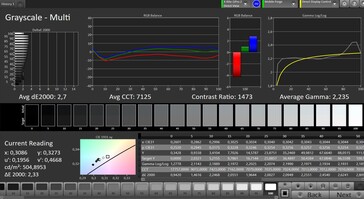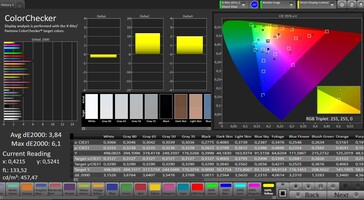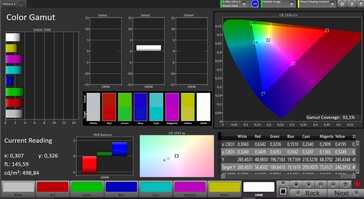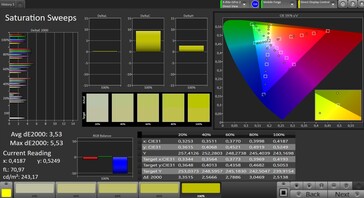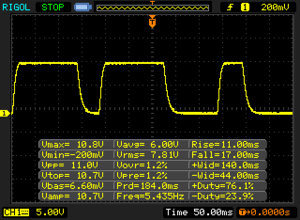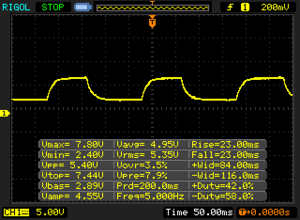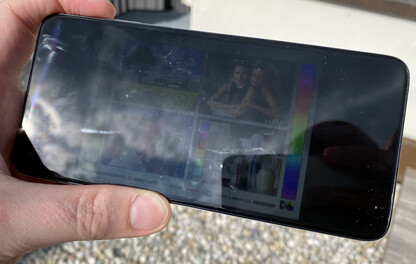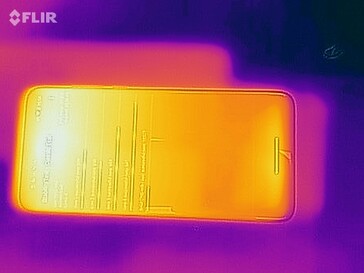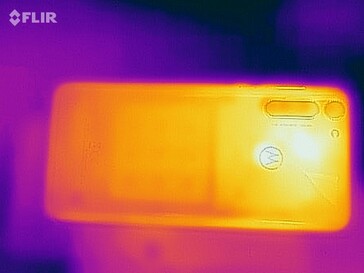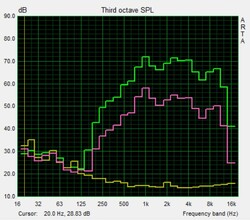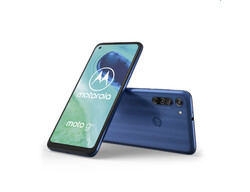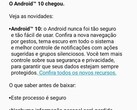Motorola Moto G8 Smartphone Review – $200 Smartphone with Versatile Camera
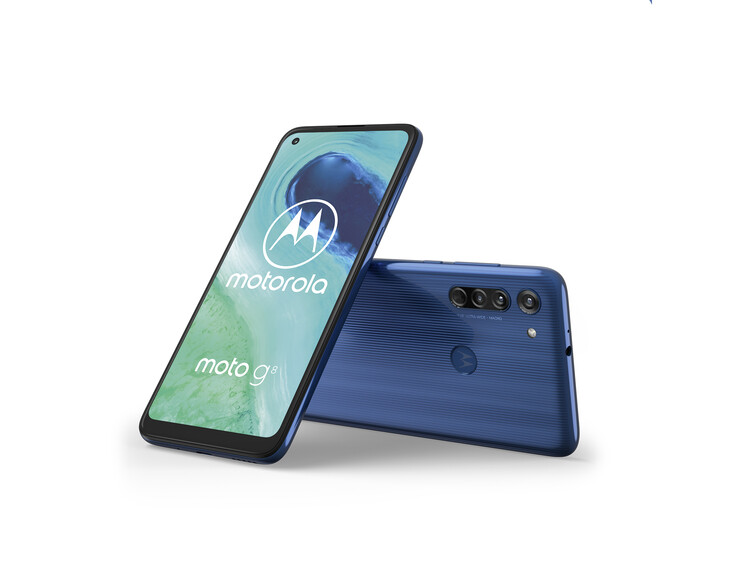
Most Moto G8 series devices were already released into the wild several months ago, except for the traditional G8 itself that was still missing. We have already had the Moto G8 Plus and Moto G8 Power in review and both performed very well. The Moto G8 Plus featured a rather uncommon camera setup with a wide-angle camera rotated by 90 degrees that could only be used as action cam. Nice idea for sure, but those who preferred a standard wide-angle lens for taking wide-angle photos were left out in the cold.
The Moto G8 returns to a more conventional camera setup, and it is comfortably normal otherwise as well. It features a dedicated fingerprint reader at the back, a 3.5-mm audio jack at the top, and a rather traditional design lacking the iconic round camera module from the days of yore.
Let us find out whether the roughly $200 Motorola Moto G8 is a good deal or not, shall we?
Test Group
Rating | ratingversion | Date | Model | Weight | Drive | Size | Resolution | Best Price |
|---|---|---|---|---|---|---|---|---|
| 76.6 % | 7 | 05/2020 | Motorola Moto G8 SD 665, Adreno 610 | 188 g | 64 GB eMMC Flash | 6.40" | 1560x720 | |
| 84.7 % | 6 | 02/2019 | Motorola Moto G7 SD 632, Adreno 506 | 172 g | 64 GB eMMC Flash | 6.20" | 2270x1080 | |
| 76.1 % | 7 | 01/2020 | Xiaomi Redmi 8 SD 439, Adreno 505 | 188 g | 64 GB eMMC Flash | 6.22" | 1520x720 | |
| 79.2 % | 7 | 11/2019 | Samsung Galaxy A30s Exynos 7904, Mali-G71 MP2 | 166 g | 64 GB eMMC Flash | 6.40" | 1560x720 | |
| 75.7 % | 7 | 11/2019 | Honor 9X Kirin 710, Mali-G51 MP4 | 197 g | 128 GB UFS 2.1 Flash | 6.59" | 2340x1080 |
Case – Robust Plastic
The Motorola Moto G8 comes in a traditional plastic case with a texture underneath its either white or blue surface. Despite its total lack of metal or glass at the rear the case felt and looked very premium, and thanks to its rounded edges it was also very comfortable to hold in the hand. The bezels at the front are clearly visible, and the punch-hole camera is located in the top left display corner.
Overall, the case is pretty robust. Pressure applied to the rear has no effect on the display and we were practically unable to warp the device, which further boosted overall quality impressions. At 188 g the device is significantly heavier than its predecessor.
Connectivity – Bluetooth 5.0 Included
Connectivity is fitting for a mid-range device in the Moto G8’s price range. Highlights include Bluetooth 5.0 and a USB-C port.
Our review unit featured two SIM slots, one of which can alternatively take a microSD card with up to 512 GB.
Software – Fairly Pure Android 10
Motorola is known for installing a fairly pure and vanilla flavor of Android with just a few preloaded third-party applications, and the Moto G8 is no exception. It comes with a pure flavor of Android 10 with security patches as of March 2020, which could still be considered fairly recent at the time of testing.
An app specifically aimed at gamers is Moto GameTime. It offers gaming-centric settings such as disabling notifications while playing games or temporarily suspending automatic brightness adjustment.
Communication and GPS – Only Wi-Fi 4
The highest supported Wi-Fi standard is v4, and when connected to our Netgear Nighthawk AX12 reference router the G8 did not perform particularly well. Together with the Xiaomi Redmi 8 it offered the lowest transfer rates of our entire test group. A reason for this could be the fact that the Moto G8 lacks support for 5 GHz bands.
LTE performance, on the other hand, was quite fast and topped out at 400 Mb/s. Cellular reception in urban areas when connected to Germany’s Vodafone network was okay, and the device always showed at least 50% reception indoors as well. The number of supported LTE bands is average and could become an issue when traveling abroad. The G8 might be unable to connect to foreign LTE networks due to lack of support.
| Networking | |
| iperf3 transmit AX12 | |
| Honor 9X | |
| Motorola Moto G7 | |
| Samsung Galaxy A30s | |
| Motorola Moto G8 | |
| Xiaomi Redmi 8 | |
| iperf3 receive AX12 | |
| Average of class Smartphone (last 2 years) | |
| Honor 9X | |
| Samsung Galaxy A30s | |
| Motorola Moto G7 | |
| Xiaomi Redmi 8 | |
| Motorola Moto G8 | |
During our real-world GPS test, where we take every smartphone on a quick bicycle tour around the block and compare its tracking capabilities to a professional Garmin Edge 520, the Moto G8 did fairly well overall, but the results were pretty mixed. On the one hand it placed us next to the street when crossing the bridge and around the turning point. On the other its tracking was spot-on in those pesky narrow old-town roads. As long as you do not expect absolute perfection and accuracy from your smartphone’s GPS then the Moto G8 should do the job just fine.
Telephony and Call Quality
Motorola opted for Google’s default telephony app. It is easy to use, and one of its main benefits is most certainly that many users will already be familiar with it from other Android smartphones.
The earphone managed to transmit our conversational partner’s voice very well and clear overall. Maximum volume was fairly high but we did notice a minor hum with the volume turned all the way up. Audio quality improved significantly when we lowered the volume slightly. The microphone recorded our voice clearly, however our conversational partners noted that we sounded quite distant, and that our voice was fairly cool. On speakerphone, call quality was average at best and once again our own voice was distant. We had to talk fairly loudly in order for our counterpart to understand a word of what we were saying.
Cameras – Motorola Smartphone with Four Cameras
With its main 16 MP camera the Motorola Moto G8 is adequately equipped for its price class. In addition, it also offers a macro and a wide-angle lens. Zooming between the wide-angle and the standard lens is seamless, but the macro lens has to be specifically selected though.
Photos taken with the Motorola Moto G8 under normal lighting conditions turned out fairly well, with decent focus and a high level of details. Poor light and high contrast, on the other hand, resulted in rapidly deteriorating image quality.
Videos are recorded in 4K and 30 FPS. You cannot switch between the various lenses while recording, and 4K recording is only supported on the main lens. Video quality was decent, even in fading light. As long as you do not expect high-quality high-end videos the camera will be more than good enough for your personal home and family video memories.
At the front we find an 8 MP camera. It took decent and adequately illuminated photos with somewhat washed-out details.
When tested in our lab we noticed that our test chart was captured comparatively well albeit with decreasing contrast ratio. Accordingly, some colors lack brilliance. With brightness reduced to 1 lux the photo taken was very noisy, but the camera managed to retain some recognizable details.
Color accuracy was fairly good under perfect lighting conditions.
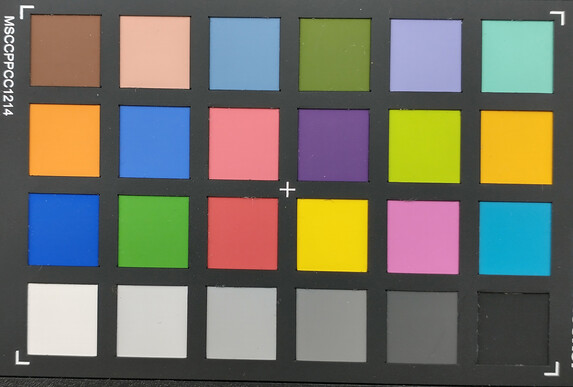
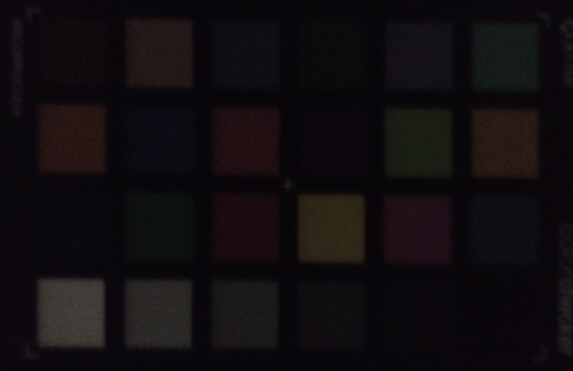
Accessories and Warranty – Bumper Included
Inside the box we find the smartphone itself, a modular charger, a USB cable, a SIM tool, and last but not least a silicone bumper.
Devices sold in Europe come with 24 months of warranty while Motorola smartphones sold in the US are typically limited to just 12 months.
Input Devices & Handling – Dedicated Fingerprint Reader
The system felt smooth and snappy most of the time but managed to drop some frames here and there when running demanding applications. The touchscreen worked reliably up to its very edges and corners. The standby button is slightly ribbed and thus easy to recognize and find.
The fingerprint reader at the back worked very reliably and unlocked the smartphone without noticeable lag.
Display – Lower Resolution on the Moto G8
The display resolution is just 1560x720, and thus significantly lower than on the G8’s predecessor (2270x1080). Brightness distribution was fairly uneven. Maximum brightness was about as high as on its predecessor and thus at an adequate level considering the G8’s class.
Overall display quality was clear. Unfortunately, colors were not particularly vibrant.
| |||||||||||||||||||||||||
Brightness Distribution: 83 %
Center on Battery: 504 cd/m²
Contrast: 1800:1 (Black: 0.28 cd/m²)
ΔE Color 3.84 | 0.5-29.43 Ø5
ΔE Greyscale 2.7 | 0.57-98 Ø5.3
92.1% sRGB (Calman 2D)
Gamma: 2.235
| Motorola Moto G8 IPS, 1560x720, 6.40 | Motorola Moto G7 IPS, 2270x1080, 6.20 | Xiaomi Redmi 8 IPS LCD, 1520x720, 6.22 | Samsung Galaxy A30s Super AMOLED, 1560x720, 6.40 | Honor 9X LCD IPS, 2340x1080, 6.59 | |
|---|---|---|---|---|---|
| Screen | -35% | 15% | 24% | -50% | |
| Brightness middle | 504 | 471 -7% | 554 10% | 488 -3% | 494 -2% |
| Brightness | 452 | 453 0% | 516 14% | 489 8% | 483 7% |
| Brightness Distribution | 83 | 94 13% | 85 2% | 93 12% | 94 13% |
| Black Level * | 0.28 | 0.5 -79% | 0.24 14% | 0.51 -82% | |
| Contrast | 1800 | 942 -48% | 2308 28% | 969 -46% | |
| Colorchecker dE 2000 * | 3.84 | 5.5 -43% | 2.6 32% | 1.7 56% | 5.74 -49% |
| Colorchecker dE 2000 max. * | 6.1 | 7.95 -30% | 4.9 20% | 3.3 46% | 10.26 -68% |
| Greyscale dE 2000 * | 2.7 | 5 -85% | 2.7 -0% | 2 26% | 7.3 -170% |
| Gamma | 2.235 98% | 2.326 95% | 2.17 101% | 2.1 105% | 2.086 105% |
| CCT | 7125 91% | 7654 85% | 6814 95% | 6506 100% | 8572 76% |
* ... smaller is better
Screen Flickering / PWM (Pulse-Width Modulation)
| Screen flickering / PWM detected | 625 Hz | ||
The display backlight flickers at 625 Hz (worst case, e.g., utilizing PWM) . The frequency of 625 Hz is quite high, so most users sensitive to PWM should not notice any flickering. In comparison: 53 % of all tested devices do not use PWM to dim the display. If PWM was detected, an average of 17900 (minimum: 5 - maximum: 3846000) Hz was measured. | |||
Thanks to a fairly low black level the contrast ratio turned out decent, which helps when trying to tell fine nuances of color apart.
When tested with a spectrophotometer in combination with the CalMAN software we noticed minor color deviations. That being said, the Samsung Galaxy A30s was more accurate out of the box. Grayscales were very accurate without any inaccuracies discernible to the naked eye. Fortunately, we did not notice a blue tint either.
Display Response Times
| ↔ Response Time Black to White | ||
|---|---|---|
| 28 ms ... rise ↗ and fall ↘ combined | ↗ 11 ms rise | |
| ↘ 17 ms fall | ||
| The screen shows relatively slow response rates in our tests and may be too slow for gamers. In comparison, all tested devices range from 0.1 (minimum) to 240 (maximum) ms. » 67 % of all devices are better. This means that the measured response time is worse than the average of all tested devices (21.5 ms). | ||
| ↔ Response Time 50% Grey to 80% Grey | ||
| 46 ms ... rise ↗ and fall ↘ combined | ↗ 23 ms rise | |
| ↘ 23 ms fall | ||
| The screen shows slow response rates in our tests and will be unsatisfactory for gamers. In comparison, all tested devices range from 0.2 (minimum) to 636 (maximum) ms. » 76 % of all devices are better. This means that the measured response time is worse than the average of all tested devices (33.7 ms). | ||
Performance – Decent Price-Performance Ratio
The Qualcomm Snapdragon 665 is a powerful mid-range smartphone SoC featuring a total of eight cores in two clusters: A high-performance cluster for demanding processes and an energy-efficient cluster for less-demanding tasks.
Thanks to this SoC the Moto G8 manages to leave its competitors in the dust. Compared to its own predecessor, the G8 was about 15 – 20% faster. Graphics performance was also higher than we would have expected of a device in this class.
| Geekbench 4.4 | |
| 64 Bit Single-Core Score (sort by value) | |
| Motorola Moto G8 | |
| Motorola Moto G7 | |
| Average Qualcomm Snapdragon 665 (1495 - 1536, n=3) | |
| Average of class Smartphone (934 - 9574, n=91, last 2 years) | |
| 64 Bit Multi-Core Score (sort by value) | |
| Motorola Moto G8 | |
| Motorola Moto G7 | |
| Average Qualcomm Snapdragon 665 (5134 - 5663, n=3) | |
| Average of class Smartphone (2630 - 26990, n=91, last 2 years) | |
| GFXBench 3.1 | |
| on screen Manhattan ES 3.1 Onscreen (sort by value) | |
| Motorola Moto G8 | |
| Motorola Moto G7 | |
| Xiaomi Redmi 8 | |
| Samsung Galaxy A30s | |
| Honor 9X | |
| Average Qualcomm Snapdragon 665 (10 - 27, n=10) | |
| Average of class Smartphone (3.7 - 158, n=185, last 2 years) | |
| 1920x1080 Manhattan ES 3.1 Offscreen (sort by value) | |
| Motorola Moto G8 | |
| Motorola Moto G7 | |
| Xiaomi Redmi 8 | |
| Samsung Galaxy A30s | |
| Honor 9X | |
| Average Qualcomm Snapdragon 665 (13 - 13, n=10) | |
| Average of class Smartphone (6.2 - 279, n=185, last 2 years) | |
| AnTuTu v8 - Total Score (sort by value) | |
| Motorola Moto G8 | |
| Xiaomi Redmi 8 | |
| Samsung Galaxy A30s | |
| Average Qualcomm Snapdragon 665 (167305 - 181432, n=9) | |
Web-browsing performance was average at best, and the Moto G8 was outpaced by quite a few of its competitors. Translated into real-life expectations this means that loading websites might take a bit longer sometimes, and when scrolling new content might not be displayed instantaneously but with minor lag.
| Jetstream 2 - Total Score | |
| Average of class Smartphone (13.8 - 351, n=173, last 2 years) | |
| Honor 9X (Chrome 78) | |
| Average Qualcomm Snapdragon 665 (22.9 - 31.2, n=6) | |
| Motorola Moto G8 (Chrome 81) | |
| Samsung Galaxy A30s (Chrome 78) | |
| Xiaomi Redmi 8 (Chrome 79) | |
| JetStream 1.1 - Total Score | |
| Average of class Smartphone (last 2 years) | |
| Average Qualcomm Snapdragon 665 (33.4 - 51, n=8) | |
| Motorola Moto G7 (Chrome 71) | |
| Samsung Galaxy A30s (Chrome 78) | |
| Motorola Moto G8 (Chrome 81) | |
| Xiaomi Redmi 8 (Chrome 79) | |
| Speedometer 2.0 - Result | |
| Average of class Smartphone (14.9 - 445, n=157, last 2 years) | |
| Honor 9X (Chrome 78) | |
| Average Qualcomm Snapdragon 665 (25.4 - 30.8, n=6) | |
| Motorola Moto G8 (Chome 81) | |
| Samsung Galaxy A30s (Chrome 78) | |
| Xiaomi Redmi 8 (Chrome 79) | |
| WebXPRT 3 - Overall | |
| Average of class Smartphone (39 - 304, n=122, last 2 years) | |
| Motorola Moto G7 (Chrome 71) | |
| Average Qualcomm Snapdragon 665 (38 - 58, n=9) | |
| Samsung Galaxy A30s (Chrome 78) | |
| Motorola Moto G8 (Chrome 81) | |
| Xiaomi Redmi 8 (Chrome 79) | |
| Octane V2 - Total Score | |
| Average of class Smartphone (4633 - 89112, n=211, last 2 years) | |
| Honor 9X (Chrome 78) | |
| Average Qualcomm Snapdragon 665 (6133 - 9671, n=9) | |
| Motorola Moto G7 (Chrome 71) | |
| Samsung Galaxy A30s (Chrome 78) | |
| Motorola Moto G8 (Chrome 81) | |
| Xiaomi Redmi 8 (Chrome 79) | |
| Mozilla Kraken 1.1 - Total | |
| Xiaomi Redmi 8 (Chrome 79) | |
| Motorola Moto G8 (Chrome 81) | |
| Samsung Galaxy A30s (Chrome 78) | |
| Motorola Moto G7 (Chrome 71) | |
| Average Qualcomm Snapdragon 665 (4434 - 6719, n=9) | |
| Honor 9X (Chrome 78) | |
| Average of class Smartphone (388 - 9999, n=173, last 2 years) | |
* ... smaller is better
Storage performance was comparatively high, although the G8 was incapable of keeping up with the Honor 9X's UFS 2.1 memory.
MicroSD cards worked flawlessly, and performance was barely adequate when benchmarked with our Toshiba Exceria Pro M501 reference card.
| Motorola Moto G8 | Motorola Moto G7 | Xiaomi Redmi 8 | Samsung Galaxy A30s | Honor 9X | Average 64 GB eMMC Flash | Average of class Smartphone | |
|---|---|---|---|---|---|---|---|
| AndroBench 3-5 | 5% | -3% | -7% | 65% | -12% | 302% | |
| Sequential Read 256KB | 301 | 297 -1% | 285.7 -5% | 291.8 -3% | 860 186% | 273 ? -9% | 1505 ? 400% |
| Sequential Write 256KB | 239 | 216 -10% | 202.6 -15% | 101.7 -57% | 196.1 -18% | 176.8 ? -26% | 1112 ? 365% |
| Random Read 4KB | 57.3 | 69.3 21% | 79 38% | 93.2 63% | 142.3 148% | 59.1 ? 3% | 247 ? 331% |
| Random Write 4KB | 128.1 | 75.6 -41% | 7.33 -94% | 13.95 -89% | 159.3 24% | 31.7 ? -75% | 271 ? 112% |
| Sequential Read 256KB SDCard | 68.7 ? | 86.9 ? 26% | 86.9 ? 26% | 80 ? 16% | 76.2 ? 11% | 77.4 ? 13% | |
| Sequential Write 256KB SDCard | 48.7 ? | 66.8 ? 37% | 63.6 ? 31% | 64 ? 31% | 67.1 ? 38% | 58.3 ? 20% |
Gaming – 30 FPS is not always achievable
We use Gamebench to benchmark some popular games, among others PUBG Mobile and Arena of Valor. Unfortunately, we were unable to run Asphalt 9. In PUBG, we were unable to select the highest preset with the G8. When set to “Balanced”, the game averaged 20 FPS. In other words: Settings higher than “Balanced” would not make any sense anyway. When set to “Smooth”, aka the lowest details possible, we managed an average frame rate of 30 FPS. In return, Arena of Valor had no trouble whatsoever running smoothly at 30 FPS.
Controls worked flawlessly, and both the touchscreen and the gyroscope reacted reliably and fast.
Emissions – No Throttling
Temperature
Under load, the Motorola Moto G8 maxed out at 41.6 °C at the top on the back side of the phone. Surface temperatures at the front were a bit lower. The phone thus got noticeably warm yet not warm enough to cause any issues, and it should remain cool enough even in summer. When subjected to low or very low load surface temperatures increased very slightly.
We use GFXBench’s battery test in order to determine potential throttling issues under sustained load, and we are happy to report that the G8 did not show any signs of thermal throttling whatsoever.
(±) The maximum temperature on the upper side is 41.2 °C / 106 F, compared to the average of 35 °C / 95 F, ranging from 21.9 to 56 °C for the class Smartphone.
(±) The bottom heats up to a maximum of 41.6 °C / 107 F, compared to the average of 33.8 °C / 93 F
(+) In idle usage, the average temperature for the upper side is 30.4 °C / 87 F, compared to the device average of 32.7 °C / 91 F.
Speakers
The single small mono speaker at the button is not as loud as its predecessor’s. However, it still manages a decent soundscape with a high frequency bias on maximum volume. However, this bias was much less pronounced than on most other smartphones, and we managed to hear some mids mixed into the soundscape as well. Overall, audio was thus fairly balanced.
Enthusiasts and audiophiles will benefit immensely from connecting external headphones or speakers via the device's 3.5-mm headphone jack at the top of its Bluetooth 5.0 chip. Both worked great and put out clear and clean audio.
Motorola Moto G8 audio analysis
(±) | speaker loudness is average but good (80.1 dB)
Bass 100 - 315 Hz
(-) | nearly no bass - on average 62.9% lower than median
(+) | bass is linear (0% delta to prev. frequency)
Mids 400 - 2000 Hz
(-) | nearly no mids - on average 62.9% lower than median
(+) | mids are linear (0% delta to prev. frequency)
Highs 2 - 16 kHz
(-) | nearly no highs - on average 62.9% lower than median
(+) | highs are linear (0% delta to prev. frequency)
Overall 100 - 16.000 Hz
(-) | overall sound is not linear (120.9% difference to median)
Compared to same class
» 88% of all tested devices in this class were better, 10% similar, 3% worse
» The best had a delta of 12%, average was 38%, worst was 134%
Compared to all devices tested
» 96% of all tested devices were better, 3% similar, 1% worse
» The best had a delta of 4%, average was 25%, worst was 134%
Motorola Moto G7 audio analysis
(+) | speakers can play relatively loud (83.4 dB)
Bass 100 - 315 Hz
(-) | nearly no bass - on average 68.9% lower than median
(+) | bass is linear (0% delta to prev. frequency)
Mids 400 - 2000 Hz
(-) | nearly no mids - on average 68.9% lower than median
(+) | mids are linear (0% delta to prev. frequency)
Highs 2 - 16 kHz
(-) | nearly no highs - on average 68.9% lower than median
(+) | highs are linear (0% delta to prev. frequency)
Overall 100 - 16.000 Hz
(-) | overall sound is not linear (122.6% difference to median)
Compared to same class
» 90% of all tested devices in this class were better, 9% similar, 2% worse
» The best had a delta of 12%, average was 38%, worst was 134%
Compared to all devices tested
» 97% of all tested devices were better, 3% similar, 1% worse
» The best had a delta of 4%, average was 25%, worst was 134%
Battery Life – It Should Last for a Long Time
Power Consumption
While the Motorola Moto G8 might not have been the most efficient smartphone in our test group and had a higher power consumption than its predecessor, and a significantly higher power consumption than the Xiaomi Redmi 8 or the Galaxy A30s, it easily managed to beat the Honor 9X by a significant margin. Power consumption was higher than on many devices regardless of load. However, you should also keep in mind that the G8 was more powerful than most of its competitors.
| Off / Standby | |
| Idle | |
| Load |
|
| Motorola Moto G8 4000 mAh | Motorola Moto G7 3000 mAh | Xiaomi Redmi 8 5000 mAh | Samsung Galaxy A30s 4000 mAh | Honor 9X 4000 mAh | Average Qualcomm Snapdragon 665 | Average of class Smartphone | |
|---|---|---|---|---|---|---|---|
| Power Consumption | 6% | 36% | 31% | -49% | 11% | 9% | |
| Idle Minimum * | 1.3 | 1.1 15% | 0.57 56% | 0.79 39% | 2.3 -77% | 1.017 ? 22% | 0.897 ? 31% |
| Idle Average * | 2 | 1.8 10% | 1.8 10% | 1.98 1% | 3 -50% | 1.893 ? 5% | 1.452 ? 27% |
| Idle Maximum * | 2.8 | 2.6 7% | 1.82 35% | 2.03 27% | 4.2 -50% | 2.36 ? 16% | 1.629 ? 42% |
| Load Average * | 3.9 | 4.2 -8% | 2.57 34% | 2.37 39% | 5.3 -36% | 3.77 ? 3% | 5.55 ? -42% |
| Load Maximum * | 7.2 | 6.8 6% | 4.12 43% | 3.68 49% | 9.4 -31% | 6.66 ? 7% | 8.31 ? -15% |
* ... smaller is better
Battery Life
Despite its comparatively high power consumption the Moto G8 benefits immensely from its 4,000 mAh battery, much more so than its predecessor. The battery’s size is average for its class, only the Xiaomi Redmi 8 offered another 1,000 mAh and thus longer battery life in return. That being said, a runtime of 16:28 hours in our Wi-Fi test is very good and translated into everyday use this should result in up to three days of battery life with moderate use.
Charging the device with the included 10 W TurboPower power supply takes around 2 hours from near empty to full. Given that 10 W is now more or less standard we would not refer to it as quick-charging technology. In this day and age, fast chargers need to offer a lot more than that.
| Motorola Moto G8 4000 mAh | Motorola Moto G7 3000 mAh | Xiaomi Redmi 8 5000 mAh | Samsung Galaxy A30s 4000 mAh | Honor 9X 4000 mAh | |
|---|---|---|---|---|---|
| Battery Runtime | -21% | 9% | -9% | -16% | |
| Reader / Idle | 1953 | 1548 -21% | 2521 29% | ||
| H.264 | 1048 | 819 -22% | 798 -24% | 982 -6% | |
| WiFi v1.3 | 988 | 798 -19% | 1157 17% | 634 -36% | 832 -16% |
| Load | 276 | 219 -21% | 308 12% | 317 15% |
Pros
Cons
Verdict – Camera with real Benefit
The Motorola Moto G8 is a decent mid-range smartphone for small budgets. It offers a more conventional and thus more useful camera setup than the Moto G8 Plus. The cameras performed very well for its class, and they even support zooming. In return, the contrast ratio was too low on occasion.
We also liked the G8’s battery life, its above average performance, and the robust case. The dedicated fingerprint reader is a joy to use, the device stays comparatively cool, and the speaker is okay.
The Motorola Moto G8 is fairly affordable and offers multiple cameras and thus a real edge over its rivals.
The price cuts compared to its predecessor manifested themselves in a lower resolution display. Fortunately, it remained good enough and continues to offer a decent quality image. Compared to its competitors the G8’s main benefit is without a doubt its versatile cameras. One reason for this might be that most 2020 mid-range smartphones have not even been released yet. However, at its current affordable price point the Moto G8 offers a decent overall packaged without any major shortcomings.
Motorola Moto G8
-
05/12/2020 v7
Florian Schmitt


 Deutsch
Deutsch English
English Español
Español Français
Français Italiano
Italiano Nederlands
Nederlands Polski
Polski Português
Português Русский
Русский Türkçe
Türkçe Svenska
Svenska Chinese
Chinese Magyar
Magyar